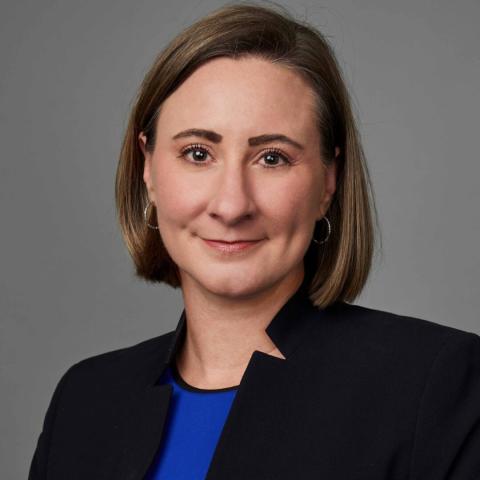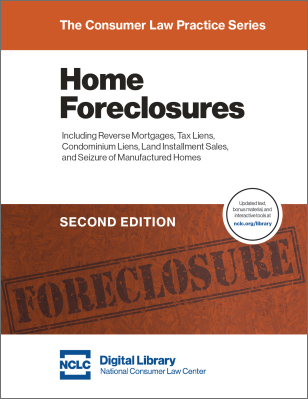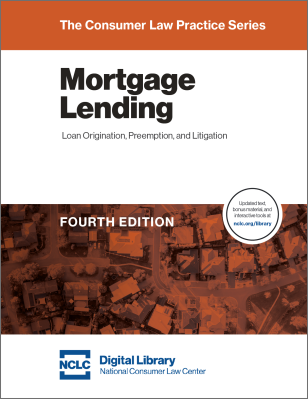HUD created a March 21st deadline for reverse mortgage servicers to assign the reverse mortgage to HUD without financial penalty in order to protect certain surviving non-borrower spouses from foreclosure. This article explains the meaning of the deadline and what actions non-borrowing surviving spouses should take so that they can remain in their homes. For a certain category of surviving spouses, it is important to act before March 21.
The Mortgagee Optional Election Option Protecting Non-Borrowing Spouses
Administered by HUD, the nation’s major reverse mortgage program is called the Home Equity Conversion Mortgage (HECM) program. HECM mortgages are made by private lenders, but under rules set out by HUD.
HECM reverse mortgage loans generally must be paid off when the last borrower dies, sells, or permanently relocates from the home. Since August 4, 2014, the HECM loan documents explicitly allow for a non-borrowing spouse to remain in the home after the borrower’s death, until the non-borrowing spouse either dies or moves out.
For HECMs made before August 4, 2014, non-borrowing spouses living in the home after the death of the borrower can end up in foreclosure unless they take action. HUD created the Mortgagee Optional Election (MOE) in 2015 to allow non-borrowing spouses with pre-August 2014 loans to remain at home after the borrower dies if they meet the eligibility criteria and continue to fulfill the terms and conditions of the loan. However, many non-borrowing spouses had been blocked from accessing the MOE program due to strict deadlines and a confusingly worded requirement to establish “good and marketable title or a legal right to remain in the home.”
HUD in 2019 Gives Non-Borrowing Spouses a Better Chance at Protection
HUD issued revised guidelines on September 23, 2019, announced in Mortgagee Letter 2019-15, indicating that non-borrowing spouses no longer have to provide proof of marketable title or a legal right to remain in the home in order to be eligible for the MOE program. Moreover, there is no hard deadline for servicers to elect the MOE. The new policy relaxes program deadlines and also requires servicers to notify borrowers about the existence of the option and request the names of any non-borrowing spouse living in the home who may potentially qualify for the option. Borrowers will receive the notice and form along with the annual occupancy certification.
Timing and Process to Avoid Foreclosure
The MOE is still discretionary with the lender. In order to avoid being financially penalized by HUD, the lender must either initiate foreclosure or assign the loan to HUD through the MOE process within 180 days of the borrower’s death or the issuance of the mortgagee letter, whichever is later. For non-borrowing spouses who were previously blocked from the program due to missing a deadline, and whose spouses died months or years ago, the new Mortgagee Letter provides a new window of time in which lenders can elect the MOE without any financial penalty.
This window extends until March 21, 2020. Even after that date, lenders can elect the MOE, but might face interest curtailment due to their delay. Lenders may choose to make the MOE election even after starting the foreclosure process.
The surviving non-borrowing spouse still must establish her eligibility under the program’s guidelines. Eligible non-borrowing spouses include those who were married to the borrower at the time of loan closing (or engaged in a committed relationship akin to marriage); live in the home as a principal residence; and have a loan that is not due and payable for other reasons. If property charges are in arrears, even if the borrower was enrolled in a repayment plan prior to the death, the non-borrowing spouse must bring those charges current before the lender can assign the loan to HUD.
If the non-borrowing spouse qualifies for the MOE, the due and payable status on the loan will be deferred and the loan will not be subject to foreclosure until the spouse moves out of the home, dies, or fails to meet the terms and conditions of the loan, including paying the property charges. Though the spouse is required to meet the financial obligations of the loan (i.e., payment of ongoing property charges, home maintenance) she will not receive any proceeds from the HECM. The non-borrowing spouse must certify annually that these conditions for deferral continue to be met.
Importance of the March 21st Deadline
Non-borrowing spouses who have not been contacted and are still in the home despite the death of a borrower-spouse prior to September 23, 2019 should reach out to the mortgage company right away. There is a short window—up until March 21, 2020—during which the lender can put these older loans into the MOE program without financial penalty.
For More Information
NCLC has produced a fact sheet for non-borrowing spouses—Are You a Reverse Mortgage Non-Borrowing Spouse? Tips to Help You Remain in Your Home—which is available to download and distribute. The fact sheet has information on obtaining assistance with the process.
Also an important source of information is HUD’s guidance found in Mortgagee Letter 2019-15 (Sept. 23, 2019).
National Consumer Law Center, Home Foreclosures Chapter 14 is a detailed treatment of all foreclosure issues relating to reverse mortgages. See in particular § 14.3.3.3 and 14.3.3.4.
Also of relevance is NCLC’s Mortgage Lending Chapter 9, concerning the origination of reverse mortgages. See in particular §§ 9.3 and 9.7.2. See also NCLCs Mortgage Servicing and Loan Modifications.



